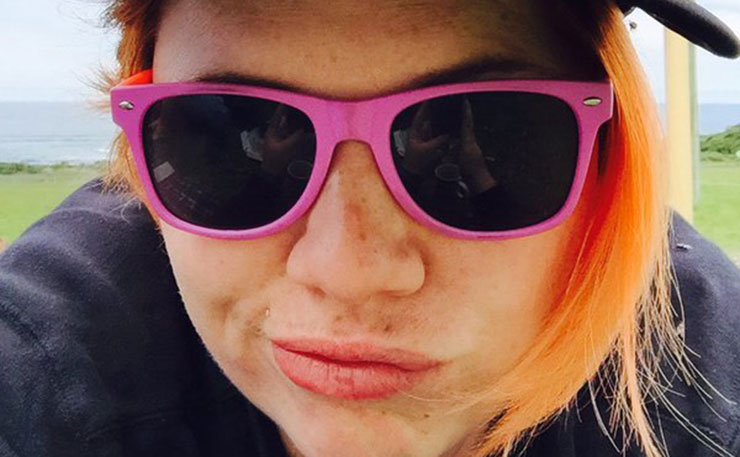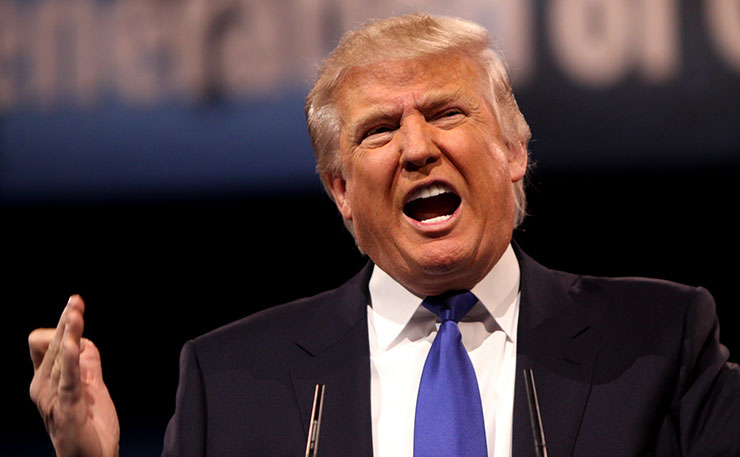On the upside, the backlash against minorities in a post-Trump world – particularly lesbian women – is a sign of a ‘perceived threat’ from a ‘growing strength’. Alana Heffernan explains.
Being a minority in the early days of an ultra-conservative 2017 is a terrifying thing: One Nation is on the up-and-up, the US President makes the Tea Party look socially progressive, terrorism is used as an excuse to subvert our responsibility to those seeking asylum from war and political persecution, and neo-Nazism appears to be making a comeback.
The Anglo-Saxon Christian male is reliving his glory days while the rest of us either blindly follow his command or genuinely fear for our future.
Being a woman, especially a lesbian woman, is particularly daunting.
All around the world, men have legislated, and continue to legislate, against the social, sexual and reproductive rights of women. For example, moments after entering the White House, photos have circulated of Trump and his numerous male colleagues signing an order prohibiting US-funded groups around the world from discussing abortion. This move clearly set the tone for any of us who had doubts about the US leadership’s attitude toward women.
In Australia, archaic laws still exist which affect the sexual and reproductive rights of women. Some of these laws disproportionately affect, and clearly target, lesbian women. For example, in South Australia, women can only access IVF if they are infertile or at risk of becoming infertile. This means female-only couples cannot conceive children through IVF unless one of them is deemed to have significant fertility problems. And there are not many more options when it comes to lesbians conceiving children.
Even though in the socially progressive communities that exist on Netflix lesbians are often considered the new “cool”, there exists a whole world of conservative heterosexual men who clearly feel threatened by women who identify as lesbian. And with the ultra-conservative political environment, they feel safe publicly expressing their vitriol.
A prime example of this is the oft-trolled Clementine Ford. Ford is an outspoken columnist and feminist, and there is constant speculation about her sexuality. This combination has caused her to be on the receiving end of horrific name-calling and threatening behaviour by anonymous men online. Particularly, she has repeatedly been called derogatory terms such as “lesbian scum” and a “man-hating dyke” and has faced threats of “corrective” rape.

Even when watching popular television and other forms of media with a strong LGBTIQ presence, one can’t help but ask, “where are the lesbians?”
At the end of 2016, GLAAD, one of the oldest US-based organisations at the forefront of cultural change, released its annual “Where We Are on TV” report. It found that lesbian representation in broadcast media was “especially disappointing” and “sends a dangerous message.” It also found that even though representation of the LGBTIQ community had increased in mainstream media, lesbians only made up 17 per cent of the characters who identify as LGBTIQ, a decrease on previous years.
Alarmingly, the report identified that “television — and broadcast series more specifically — failed queer women… as character after character was killed.” It found that of the character deaths in the year, most “served no other purpose than to further the narrative of a more central (and often straight, cisgender) character”.
As with all types of bigotry and exclusion, which many minorities are feeling the pain of now, it comes from a place of fear and anxiety. So what is it about lesbians that is so threatening?
The threat of the lesbian to the heterosexual male is much more nuanced than the threat they feel from gay men, which is usually born from an irrational fear that their bottom-patting and homoerotic wrestling on and off the sports field might actually be enjoyed by someone.
To these men, lesbians represent a world where they are neither desired nor necessary. A world where their attention is not fought for and where success is obtained without them. A world where their utility may extend no further than as a supplier for the procreation process; a party to a commercial contract.
While the death of the manufacturing and resources industries may represent professional redundancy for a lot of men, lesbian women represent their worst fear: social redundancy.
It is this fear that results in derogatory terms about sexuality being the go-to in an argument. It is this fear that makes men think it is OK to joke about, and sometimes commit, “corrective rape”. It is this fear that sees women beaten, jailed and killed all over the world. It is this fear that makes men in powerful positions make and maintain laws that inhibit our social, reproductive and sexual rights.
It is heartening to see that in the face of the mainstreaming of ultra-conservatism, there is a strong protest movement in 2017. It is especially heartening to see women out in droves with their “the future is female” shirts, and the LGBTIQ community standing up for marriage equality. In our protests and marches, let us not forget our lesbian sisters who are vulnerable and often invisible because their very existence represents what might be regarded as an unforgivable threat to the men with the power right now.
* Alana Heffernan is an employment and discrimination lawyer, however the views expressed in this article are her personal views.
Donate To New Matilda
New Matilda is a small, independent media outlet. We survive through reader contributions, and never losing a lawsuit. If you got something from this article, giving something back helps us to continue speaking truth to power. Every little bit counts.





